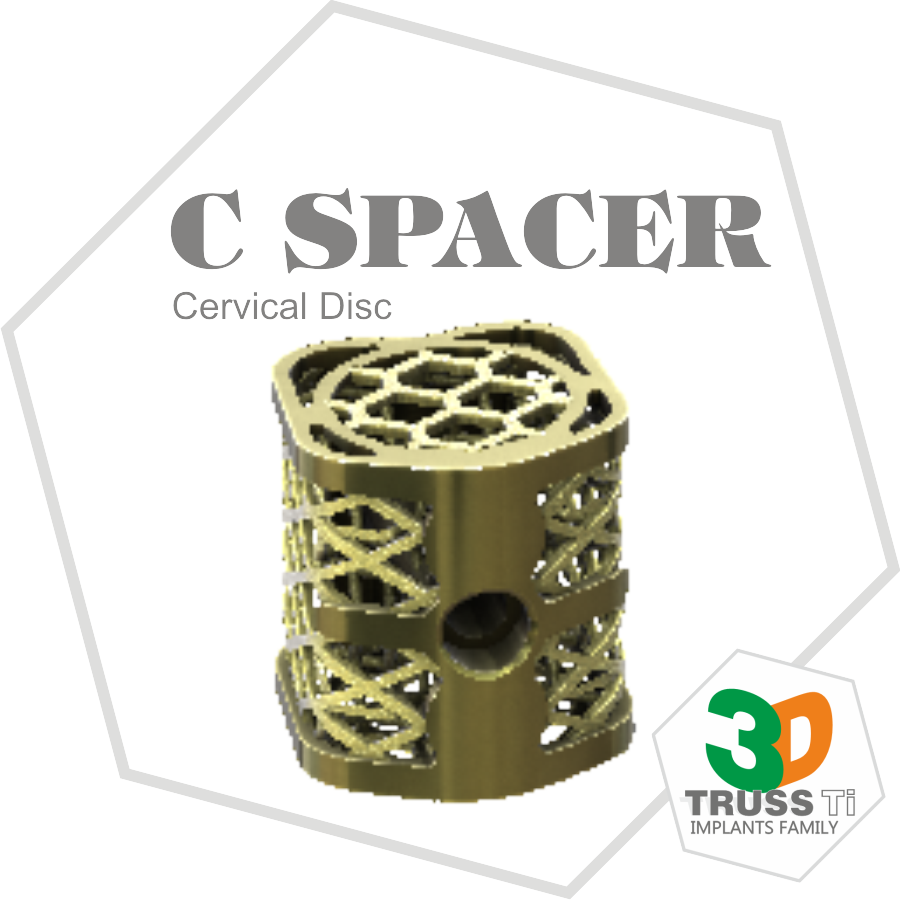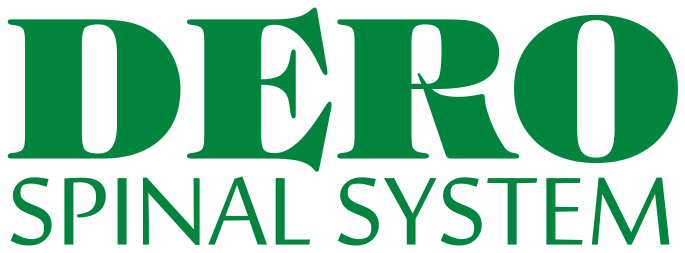
-

-

C·Spacer
Cervical Spacer – a corpectomy implant with ”3D-Truss-Ti” technology
”C·Spacer” is intended for stabilization of the cervical spine. Its goal is a reconstruction and/or preservation of the natural anatomy of the cervical spine in cases requiring corpectomy.
”C·Spacer” implant is made of Ti-alloy powder and manufactured using Electron Beam Technology (EBT). A porous implant of a special truss structure providing excellent conditions for a fusion where bone can fill the cage up to 65-70%. Its directional and corrugated (serrated) contact surfaces called ”shark teeth” prevent movement and dislocation after implantation into intervertebral space. Thanks to ”3D-Truss-Ti” technology the spacer does not require the bone graft or the bone substitute.
-
- Acceleration of bone fusion;
- Load transfer with simultaneous decompression of the nervous system;
- Implantation in intervertebral space of cervical spine;
- Standalone stabilization on one or more level;
FUNCTIONS
Compatible products:
asCp -
- Perforated truss structure (”3D-Truss-Ti”);
- Optimal osteosynthesis conditions;
- Simple implantation method;
- Wide range of sizes;
- Optional filling with bone graft or bone substitute;
FEATURES & BENEFITS
Clinical Cases
Technology
At the end of the 20th century, technologies stemming from aero-space engineering opened a world of new possibilities in 3D spatial architecture. LfC managed to transmit this space technology to the field of spinal implants. Electron beam melting (EBT-Electron Beam Technology) of Ti-alloy powder with temperatures over 2000 deg. C in a vacuum chamber -that is the essence of technology used to create a new generation of 3D-implants. Apart from the structure itself, which favors bone ingrowth within the spatial cells, the implant’s design enables an accelerated osteointegration mechanism reducing fusion time by 40-50 percent and more. This new phenomenon was studied and called „Ivy-like mechanism, L.C.” as a metaphor for the natural growth process of ivy, which climbs along the specially made rough surface of truss design.
Publications:
Ciupik L.F., Kierzkowska A., Cęcek J., Pieniążek J. Sterna J., Cieślik-Górna M. The use of incremental technology to produce 3D-Truss Ti6Al4V implants which improves the spinal treatment effectiveness. Key Engineering Materials; 2016; 687: 179-184.
Ciupik L.F., Kierzkowska A. Technology-biomechanical evaluation of metal biomaterials derived by layer technology. Engineering of Biomaterials; 2010; 93: 14-18.
Bulletins:
BULLETIN No. 03/2020
BULLETIN No. 02/2020
Poster: Innovative 3D-Ti-Printing in a Worldwide spinal surgery






